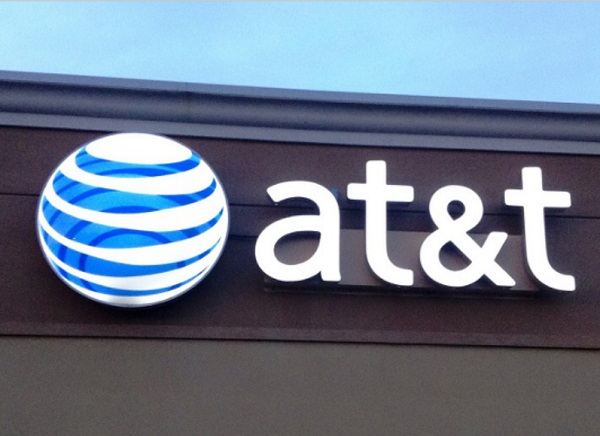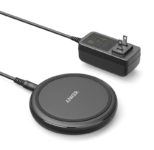
AT&T and Verizon Face Antitrust Investigation Over eSIM Technology
For cellular phone owners in the United States, the process of switching phone carriers has long been a source of frustration and even dread. Their feelings are well-founded. When cellular phone technology first began to proliferate within the U.S. in 1983, each individual carrier set their own rules regarding device transfers. In fact, because there was no mandated standardization regarding cellular network technologies, it was sometimes impossible to use certain phones on another carrier’s network.
As the years have gone on, it has become far easier for Americans to bring their own device for use with a new service provider. Between a settling of cellular network technology standards and a loosening of some legal restrictions regarding the practice, all signs pointed to a future where service provider hopping would become a simple thing to accomplish. In 2017, another technological development happened that held the promise of making the process totally painless, not only in the United States but around the world as well.
The technology is called eSIM. It is a new standard that is being developed by the GSM Association (GSMA) that would standardize the way carriers program phones for use on their respective networks. The technology is designed to be embedded in all new cellular phones and would allow users to switch service providers with little more than a notification to their old wireless company and their new one. Previously, this was accomplished by replacing a SIM card, inserted into a slot inside the device. It turns out, perhaps unsurprisingly, that some U.S. carriers may not be too happy about the eSIM concept.
Now the U.S. Department of Justice (DOJ) has opened an antitrust investigation into two of them regarding their alleged efforts to pressure the GSMA to cripple the new standard in a way that would allow them to keep throwing up roadblocks for users that wished to switch carriers. The two carriers at the center of the case are U.S. telecom giants AT&T and Verizon, who together control approximately 70% of the U.S. cellular market. Apparently, the DOJ opened the investigation at least five months ago, in response to complaints from a device manufacturer and another wireless carrier.
To understand what’s going on though, it’s important to look at the history of the two companies, as well as what is at stake for them should eSIM become a global standard. Here’s a look at some of the important details of carrier switching in the United States, and some of the reasons that AT&T and Verizon may have conspired to derail the move to eSIM standardization.

Verizon, antitrust investigation
Divergent Standards
From the very beginnings of cellular service in the U.S., there was no clear standard as to the type of cellular network a carrier had to deploy. In fact, AT&T and Verizon illustrate this point perfectly. As the two rivals began to roll out their respective digital networks (as opposed to the original analog networks), they each settled on different – and incompatible – wireless standards. AT&T opted to utilize GSM as the backbone of their cellular network, while Verizon chose to use CDMA.
Most end users wouldn’t have noticed the difference between the two types of networks, as the service and call quality of each is similar. Underneath the hood, though, there were some significant pros and cons to each. GSM networks are far more common throughout the world and became the standard cellular technology throughout most of Europe. GSM phones also included SIM cards as a means of programming the handsets for use with any carrier. CDMA networks, by comparison, didn’t support SIM cards. Instead, the carriers maintained databases of which phones were authorized to operate on their networks, which had the effect of locking the phone to a single carrier.
Since the two types of networks weren’t interoperable, companies like AT&T and Verizon simply didn’t have to worry about users taking their phones over to their competition, if only because the phones were incapable of being used on a rival network. That division helped to maintain the status quo in the U.S. cellular market for many years. Instead of making service price their main selling point, carriers began attempts to woo new customers with subsidized handsets. For many years it wasn’t uncommon for the latest devices to end up in a consumer’s pocket for little to no upfront cost, in exchange for lengthy guaranteed service contracts.

10.29. Change the equation
Smartphones and 4G Change the Equation
When Apple introduced the first iPhone in 2007, it was a product that was without equal in the cellular industry. The fact that AT&T had the exclusive rights to sell the device in the U.S. gave them a significant advantage in a difficult market. After the iPhone’s introduction, the carrier saw their profits rise by 41%, which was unheard of for a wireless provider at the time. It took rival Verizon four years to bring the iPhone to their customers, owing to AT&T’s exclusivity deal with Apple and the need to produce a CDMA variant of the popular handset.
Improving the bottom lines of AT&T and Verizon wasn’t the most important thing the iPhone accomplished, though. It changed the way that consumers viewed their devices forever. Now, Apple was in the driver’s seat in the struggle for the hearts and minds (and dollars) of consumers. In recent years, companies like Samsung have also entered the competition and made their devices household names in the same way. That shift is important because it represents the end of the wireless carriers’ stranglehold on the forces driving the U.S. wireless market.
Once consumers started to have the same handset choices from the major carriers, there was nothing left for them to do but tout the strength of their respective networks. To do it, both AT&T and Verizon rushed the deployments of their 4G wireless networks in a display of one-upmanship designed to win over new customers. As they did so, the new 4G LTE networks they deployed also brought the carriers’ technologies closer than ever before. Both networks are based GSM technology, and both support SIM cards to manage devices. Although AT&T and Verizon’s networks still weren’t fully compatible, the list of phones that could utilize either LTE network began to grow.
The Death of Subsidies
As smartphones became more and more complex, the MSRP of each new device began to increase. That presented the major wireless carriers with a new and vexing problem. Higher manufacturing costs meant that the portion of the handsets that the carrier subsidized for their customers was beginning to eat away at profits. At the same time, consumers were starting to question the onerous service contracts that had been the norm in the industry since its inception. Finally, an industry upstart changed the rules of the wireless game in the U.S. forever.
In 2013, T-Mobile lowered their monthly prices and did away with phone subsidies and contracts altogether. They reasoned that consumers would pay the full freight on the device of their choice (although sometimes in installments) and that lower monthly service fees would win the day. By 2015, AT&T and Verizon had followed suit. The two carriers had realized that their current pricing models were unsustainable as handset prices neared the thousand-dollar MSRP threshold.
With that, the last direct control that AT&T and Verizon had over their customers had evaporated. Now, every customer could purchase a phone outright, and take it with them to whichever carrier they preferred, almost at will. The last thing stopping consumers from doing so is the fact that the wireless companies still lock phones they sell for some amount of time after the sale, although they will unlock them upon request afterward.
The eSIM Threat
That last practice is exactly what eSIM is designed to end. Under the initial specification, an eSIM-enabled device wouldn’t give carriers the ability to lock it at all, even temporarily. Once a consumer purchased such a device, they’d have the ability to switch to another carrier immediately, and with no waiting period. That’s something that both AT&T and Verizon claim will increase device theft, as the value of the phones continues to rise and the ability to use them immediately after being stolen provides instant gratification to the thief.

A dangerous chip…
Both AT&T and Verizon have used the same anti-theft rationale for their current device locking policies, although to date, neither has produced any theft statistics to justify it. If eSIM had become the standard in its original form, they’d be forced to abandon the practice altogether, whatever their reasoning. With the opening of the DOJ investigation, it appears that the government believes that the two carriers may have taken direct action to make sure the ability to lock phones was preserved.
As previously stated, the DOJ investigation comes in response to complaints lodged by a rival wireless carrier, and a device manufacturer. It’s still not known which carrier cried foul, but the device manufacturer has been identified, and shouldn’t be a surprise. It turns out that the manufacturer at the heart of the case is none other than Apple. They have a vested interest in making sure that future iPhone owners have maximum flexibility when procuring service for their devices, and has already included eSIM technology in their smartwatches.
The Wait Begins
It’s far too early to tell what the results of the antitrust investigation will be, let alone the kinds of penalties that AT&T and Verizon could face if they are found to have violated any laws. The one thing that is clear is that the GSMA has halted all development of eSIM standards and technology, pending the results of the investigation. That means that consumers around the globe will have to wait even longer for the convenience that the technology promises, and there’s no telling how long the wait will be. In the end, it’s obvious that eSIM or a similar technology will be the global standard in the future, no matter the result of the investigation. The only real question is if it will be a true open standard or if it will be one that allows carriers like AT&T and Verizon to continue to impose whichever arbitrary device restrictions they choose. For the sake of U.S. consumers, we hope for the former.
LINKS
- U.S. Investigating AT&T and Verizon Over Wireless Collusion Claim – New York Times
Looking to upgrade your old phone? Trade in your existing phone for top dollar today – iGotOffer
How does the Apple Watch eSIM work? [Video]
Video uploaded by Cult of Mac on October 10, 2017






Facebook
Twitter
RSS